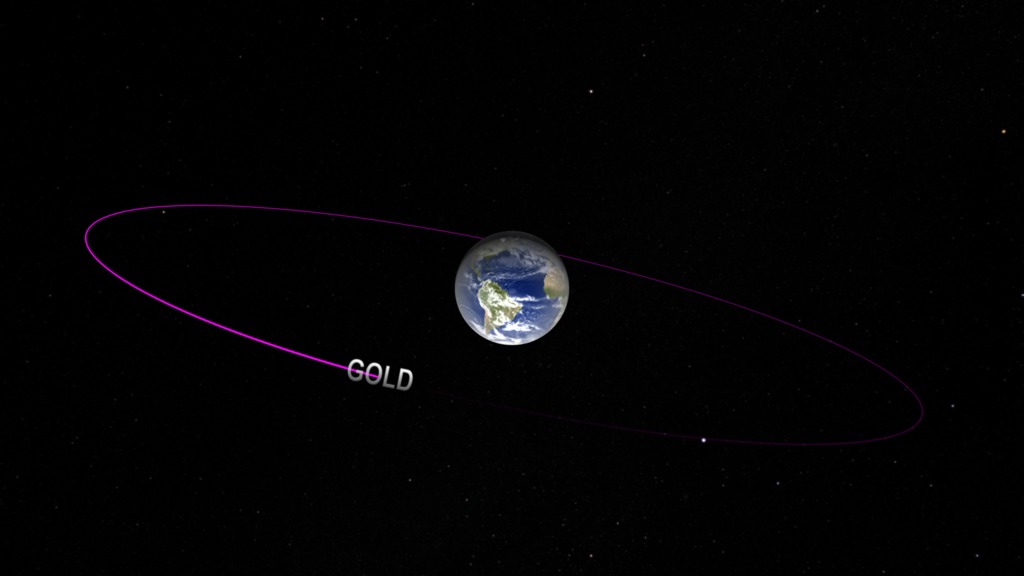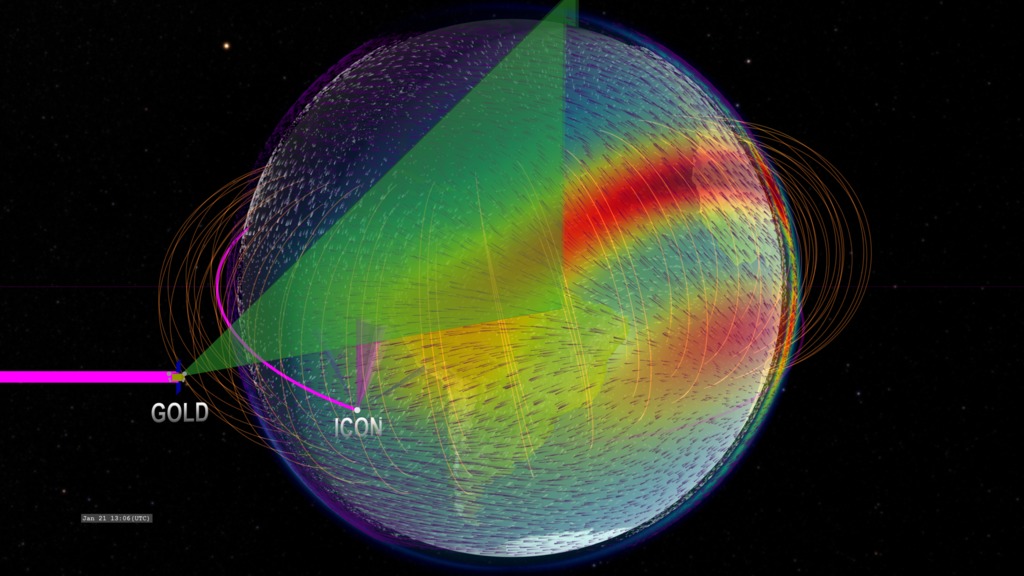Where Earth Meets Space

NASA’s newest mission, GOLD, will explore the ever-changing boundary between Earth and space.
No hard and fast line divides Earth's upper atmosphere from outer space. Instead, the little understood region where one fades into the other responds both to terrestrial weather in the lower atmosphere below and the tumult of space weather from above. This dynamic region has historically been difficult to observe; 60-400 miles above the surface, it’s too low to easily study with satellites and too high for aircraft and scientific balloons. On Jan. 25, 2018, NASA set out to change that with the launch of the Global-scale Observations of the Limb and Disk, or GOLD, instrument, hosted aboard a commercial communications satellite. From geostationary orbit, GOLD observes Earth's interface to space. Space is not completely empty: It’s teeming with fast-moving charged particles and electric and magnetic fields that guide their motion. At the boundary between Earth’s atmosphere and space, these particles and fields - the ionosphere - co-exist with the upper reaches of the neutral atmosphere, called the thermosphere. The two commingle and influence one another constantly. GOLD inspects this interplay and the forces responsible for the day-to-day changes in this critical boundary layer. Watch the videos to learn more.
GOLD explores the dynamic region where Earth’s uppermost atmosphere meets space.
At geostationary orbit 22,000 miles over the Western Hemisphere, GOLD has a full-disk view of the upper atmosphere.

The ionosphere is a region of charged particles in near-Earth space that coexists with the neutral atmosphere, called the thermosphere.

Bright swaths of light in the atmosphere, called airglow, are seen in this photo of Earth’s limb shot from the International Space Station.

GOLD teams up with NASA’s Ionospheric Connection Explorer - ICON - to provide the most comprehensive ionosphere observations we’ve ever had.
For More Information
See NASA.gov
Credits
Please give credit for this item to:
NASA's Scientific Visualization Studio
-
Producer
- Joy Ng (USRA)
-
Animator
- Tom Bridgman (Global Science and Technology, Inc.)
-
Writer
- Kathalina Tran (SGT)
-
Scientist
- Sarah L. Jones (NASA/GSFC)
Release date
This page was originally published on Monday, February 5, 2018.
This page was last updated on Wednesday, May 3, 2023 at 1:46 PM EDT.
![Complete transcript available.Music credits: 'Faint Glimmer' by Andrew John Skeet [PRS], Andrew Michael Britton [PRS], David Stephen Goldsmith [PRS], 'Ocean Spirals' by Andrew John Skeet [PRS], Andrew Michael Britton [PRS], David Stephen Goldsmith [PRS] from Killer Tracks.Watch this video on the NASA Goddard YouTube channel.](/vis/a010000/a012800/a012817/GOLDOverview_YouTube.00001_print.jpg)

